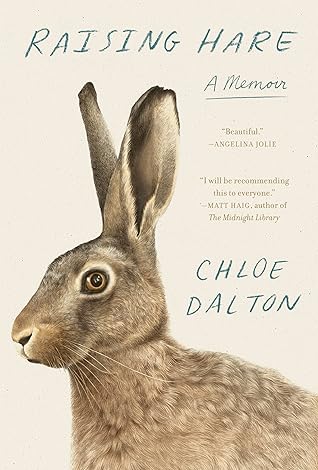More on this book
Community
Kindle Notes & Highlights
The trees were frosted white with windblown snowflakes, while icy cobwebs hung in the hedgerows like frozen cat’s cradles.
Maybe the hare’s dubious reputation, I thought, has less to do with the hare itself than our habit as humans of persecuting the things that we do not understand, and our own conflicted natures. The word “hare” comes from the Old English word for the colour grey—appropriate, perhaps, for an animal that still eludes definition. To me, the young leveret seemed still too small a creature to bear the weight of so much history, superstition and expectation, and I resolved to take it as I found it.
It had never occurred to me that wild animals could be so predictable in their habits. Seeing a flutter of wings, I would note in passing that there was “a bird” in the garden. I hadn’t thought that it might be the same bird, coming at the same time, to do the same things, day after day, and I felt a greater sense of connection to the wildlife around me. I wondered how much of the nature of animals is obscured from us simply because of the limitations of our senses and powers of observation.
Man has nothing that the animals have not at least a vestige of, the animals have nothing that man does not in some degree share.
But she was gone, taking all the mystery of her nature with her, after less than three months of a life in which she took so little and gave so much joy.
What a destructive, cruel being man is, how many living beings and plants he annihilates to maintain his own life. —Leo Tolstoy, Hadji Murat, 1912
If it is possible to create robots and drones to reap our fields for us, could we not use technology to detect the presence of leverets, and fawns, and nesting birds, and could reasonable efforts not be made to relocate them, rather than simply leaving them to be crushed beneath our machines?
“This is the only way, we say,” wrote Henry David Thoreau, “but there are as many ways as there can be drawn radii from one centre.”
It was enough for me to marvel that a single robin redbreast singing in the tops of the trees could fill the cavern of an entire wood in early autumn with its penetrating song, and my gratitude to the hare expanded as my perception deepened.
Still, it is impossible not to observe and admire her qualities, and to associate them with some of the human qualities to which many of us aspire: patience, dignity, calm and strength among them.
Under the subtle influence of the hare, my own wants have simplified. To be dependable in love and friendship more than in work. To leave the land in a more natural state than I found it. And to take better care of what is to hand, seeing beauty and value in the ordinary.
I take comfort in the fact that this process of self-discovery has been felt by millions before me, and that there is nothing original in finding consolation and inspiration in nature. It is there for all of us, perhaps our one true shared heritage and source of hope for regeneration in our own, hard-pressed lives.
As we jostle for space on this planet, for position and place and name, and agonise about missteps and paths lost, and feel the fragility of our hopes and all that we hold dear, I think of the hare, stepping lightly on the earth, taking cover if the wind blows. We are not so dissimilar. If we do not achieve all upon which we have set our hearts, or are beaten back by headwinds stronger than our desires, we too can lay up a while, watch the glitter on the grass, and renew our strength.
I will remember her leaving, but will know that before she did, she always, first, looked back.


